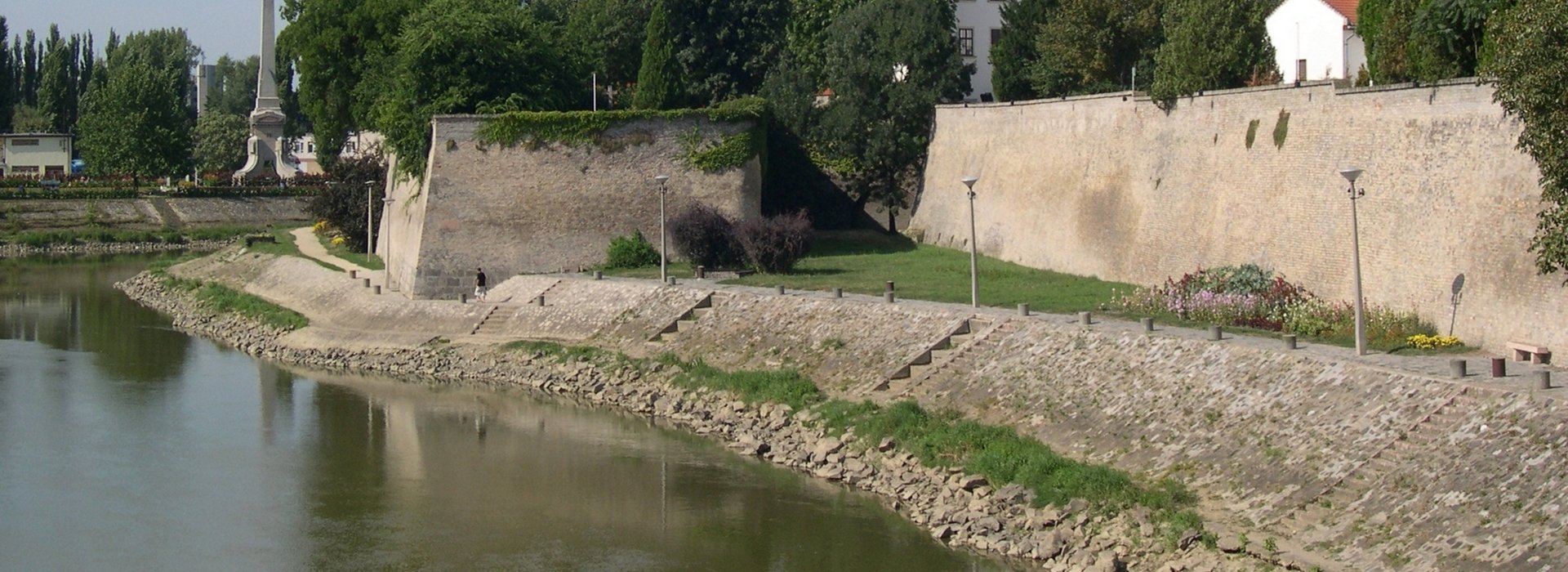

Győr has always played a significant role in the life of the region. The first large settlement here was established by the Celts during the Vth century BC. They called the town Arrabona, a name that was used for eight centuries and the abbreviation of which is still used in the German (Raab) and Slovak (Ráb) name of the city.
Roman merchants appeared in Arrabona during the 1st century BC and around 10 A.D. the Roman army occupied the northern part of Western Hungary, which they called Pannonia province. Although the Romans abandoned the area in the Vth century due to regular raids by Germanic and Hun tribes, the town still remained inhabited. During the following centuries Slavic, Lombard, Avar and Frank tribes raided and settled in the area. Between 880 and 894 the territory was part of Great Moravia, and then briefly fell under East Frankish dominance.
The Magyars occupied the town around 900 and fortified the abandoned Roman fortress. Stephen I, the first king of Hungary, founded an episcopate and built a basilica here. Győr became the seat of the comitatus, the newly established administrative unit equivalent to a county. The town received its Hungarian name Győr in the Middle Ages. Due to its favourable location it became a commercial centre and an important port on the Danube. The city, however, could not spare itself from the calamities of history: it was occupied by Mongols during the Mongol invasion of Hungary (1241–1242) and then was destroyed by the Czech army in 1271 to be finally reconquered by Ladislaus IV. After the Mongol invasion, the castle was rebuilt of stone and fortified and was declared an estate of the bishop. It was then that the castle was named Püspökvár (Bishop’s castle).
This was followed by a troubled period when the commandants of the castle ruled during a period of about 200 years. In 1403 the troops of King Sigismund attacked the castle as part of a revenge of a conspiracy hatched by Bishop Hédervári. In 1440, Győr became a royal seat as Queen Elizabeth seized the crown for her minor child and appointed Győr as her seat. This was the first time for the crown to be brought to Győr.
After the double choosing of the king following the defeat at the battle of Mohács, Baron Tamás Nádasdy and Count György Cseszneky occupied the town for King Ferdinand I while John Zápolya also attempted to annex it. Ferdinand I appointed Kristóf Lamberg as the commandant of the castle who, upon arrival of the Turkish army to the castle walls in 1529 did not even attempt to defend the city but set it ablaze instead. The Turkish found nothing but blackened ruins, hence the Turkish name for Győr, Yanık kala ("burnt city").
The town was rebuilt and surrounded by a fortified city wall, designed by leading Italian architects of the era. It changed a lot during these years, with lots of new buildings built in the Renaissance style, but the main square and the grid of streets remained. During the Turkish occupation, Győr was a border castle aimed at defending Vienna.
During the 15 year war, in 1594, after the death of Count János Cseszneky, captain of Hungarian foot-soldiers, the Turkish army occupied the castle and the town, but four years after the Hungarian and Austrian army managed to reconquer it. With the exception of this short period, however, Győr basically remained free of Turkish occupation.
Therefore, the new artistic era, the Baroque conquered the city earlier than in the Eastern settlements of the country and by the mid 1600s the Baroque downtown was already formed.
In 1683, Turks returned briefly, only to leave again after being defeated in the Battle of Vienna.
The town flourished during the following centuries. In 1743, Győr was granted the rank of a free royal town by Maria Theresa. Merchants, craftsmen and a number of religious orders (Jesuits, Carmelites) settled in the town and they built schools, churches, a hospital and a monastery.
Napoleon occupied the castle in 1809 and had some of its walls blown up. The leaders of the town soon realized that the old ramparts weren't useful any more. Most of the ramparts were destroyed and thus the town could expand.
In the mid 1800s, Győr's role in trade grew as steamship traffic on the River Danube began, but the town lost its importance in trade when the railway line between Budapest and Kanizsa was built in 1861. The town leaders compensated for this loss with industrialisation.
Between 1923 and 1945 Győr was the seat of Győr, Moson and Pozsony temporarily unified county (comitatus).
The town prospered in the interwar period, but it was severely damaged during World War II.
The 1950s and 60s brought some changes: only big blocks of flats were built, and the old historical buildings weren't given care or attention. In the 1970s the reconstruction of the city centre began; old buildings were restored and reconstructed. In 1989, Győr won the European award for the protection of historical monuments (Europa Nostra).
Győr has an enchanting centre and beautiful Baroque buildings. The ancient core of the city is Káptalan Hill at the confluence of three rivers: the Danube, Rába, and Rábca. Püspökvár. The residence of Győr’s bishops can be easily recognised by its incomplete tower. Győr’s oldest buildings are the XIIIth-century dwelling tower and the XVth-century Gothic Dóczy Chapel. The Bishop’s Cathedral ranks as a ‘basilica minor’ (Apor Vilmos Square).
Today Győr is one of the most important administrative and cultural centres of Hungary. The city is a university town and a popular tourist destination.